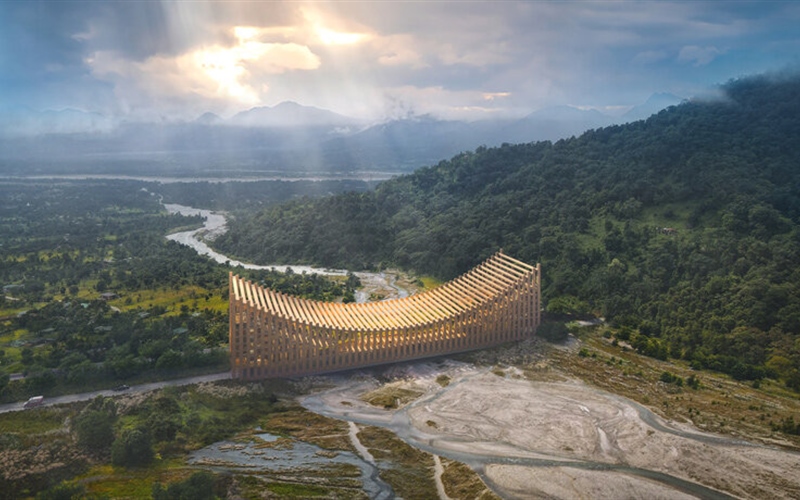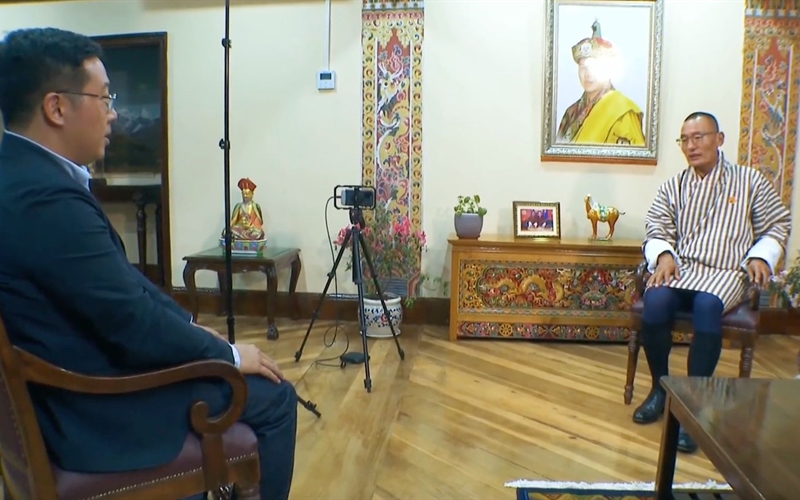Navigating Change and Bhutan's Path to Sustainability
Bhutan is among the world's most exclusive destinations. CNA delved into Bhutan's transformative journey and tourism policy.
 (Source: Bjarke Ingels Group)
(Source: Bjarke Ingels Group)
In June 2024, CNA Correspondent Saksith Saiyasombut visited Bhutan to speak with locals about the country's recent changes, including an interview with Prime Minister Dasho Tshering Tobgay. Discussions covered Bhutan's post-COVID-19 economy, youth unemployment, capitalism, Gross National Happiness (GNH), and the Gelephu Mindfulness City project initiated by His Majesty King Jigme Khesar Namgyel Wangchuck.

Photo: Screengrab from CNA.
Sonam Chopel, President of the Association of Bhutanese Cottage & Small Industry, believes Bhutan is undergoing the most disruptive and transformative phase. From the conversations with the locals, Saksith realised the Bhutanese are keenly aware of their cultural legacy while navigating significant changes.
"It's not a testbed, it's not a sandbox. It's a start of a journey. An epic journey" - Prime Minister Dasho Tshering Tobgay.
Bhutan's Low Volume, High Value Tourism Policy
CNA's East Asia Tonight also examines whether Bhutan's strategy of low-volume, high-value tourism is an effective and sustainable approach.
Check out the interview with Damcho Rinzin, Bhutan's Chief Tourism Officer, Department of Tourism.
In the interview, Damcho shared that Bhutan aims to attract conscious travellers with a target of 300,000 visitors per year. While the country anticipates an increase in tourism, they are committed to avoiding negative environmental impacts.
Aside from the popular Paro and Thimphu cities, Bhutan is also looking to expand its tourism offerings to other cities in central Bhutan and eastern Bhutan. More land entry points will be opened up and tourists can also look forward to the mega Gelephu Mindfulness Project in southern Bhutan.
The Department is also working on engaging the different segments of society to play a part in tourism such as training villagers to provide farm stays and home stays experience for more tourists.
What is Bhutan's current Sustainable Development Fee (SDF)?
On the 25th August 2023, The Royal Government of Bhutan announced additional incentives and policy measures to boost the tourism sector in Bhutan by offering a 50% discount on the Sustainable Development Fee (SDF). Currently, all incoming tourists are required to pay an SDF of USD100 per adult per night. While children aged between 6 and below 12, pay USD50 per night, and the SDF is waived for children aged 5 and below.
The SDF for Indian nationals (showing a valid Indian passport or Voter ID card) is Nu. 1,200 (or the equivalent amount in Indian rupees) per person, per night. Children aged between 6 years and who have not yet turned 12 are eligible to pay Nu./INR 600 per night. Children who have not yet turned 6 years old do not have to pay any SDF.
In a special scheme between Bhutan and Bangladesh, the first 15,000 Bangladeshi tourists visiting Bhutan each year can pay a Sustainable Development Fee (SDF) of USD 15 per day.
Bhutan is difficult to visit – Myth!
There is a misconception that Bhutan is a difficult and expensive country to access. Contrary to popular belief, Bhutan has never had an annual visa quota to limit the number of incoming tourists.
"When people eventually get to Bhutan. Breathe the air. Taste our water. Meet our people. Engage with us. Connect with us. There's a tremendous sense of satisfaction". - Prime Minister Dasho Tshering Tobgay.
View this post on Instagram
This year, Bhutan is celebrating its 50 years of tourism with numerous activities throughout a six-month campaign.
Find out more about Bhutan tour packages and travelling to Bhutan.




